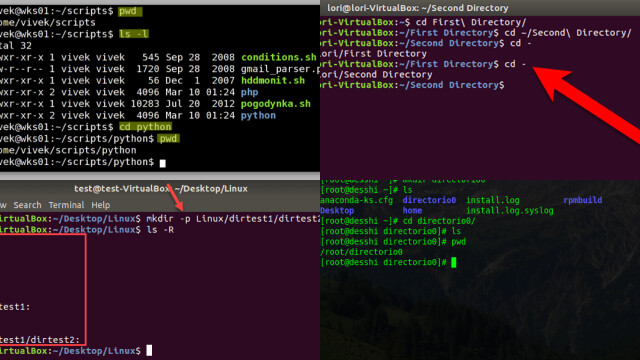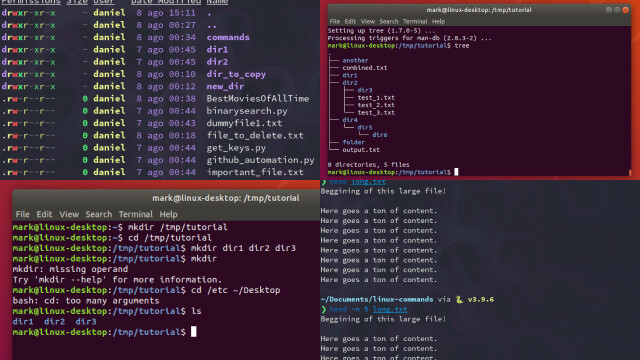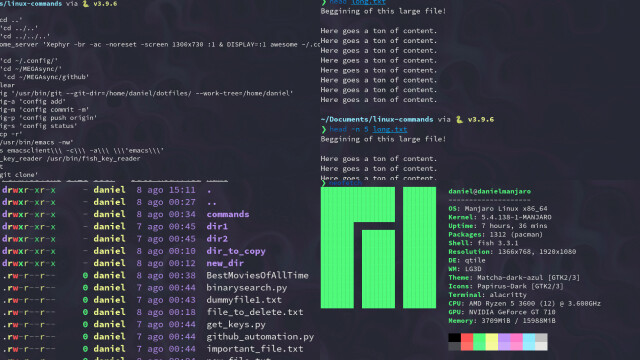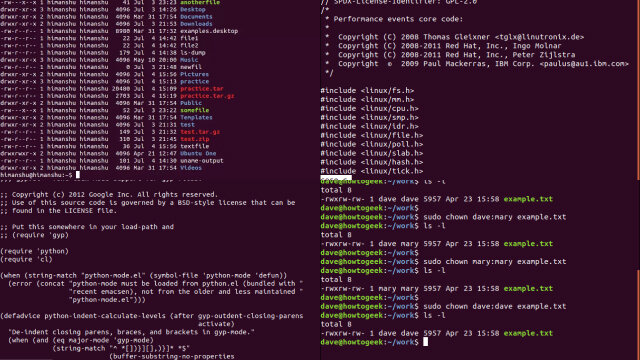Introduction to Linux Commands
Linux is an open-source operating system that is widely used by developers and system administrators. One of the most powerful aspects of Linux is its command-line interface (CLI), which allows users to perform a wide variety of tasks using just a few keystrokes. In this article, we will discuss 37 important Linux commands that every Linux user should know.
One of the first things you need to learn when using Linux is how to navigate the filesystem. The following commands will help you move around and explore the filesystem:
- pwd – displays the current working directory.
- cd – change the current working directory.
- ls – list the contents of a directory.
- tree – display the directory structure in a tree format.
- mkdir – create a new directory.
- rmdir – remove a directory.
Working with Files and Directories
Once you know how to navigate the filesystem, the next step is to learn how to work with files and directories. Here are some essential commands for file and directory management:
- touch – create a new file.
- cp – copy files and directories.
- mv – move or rename files and directories.
- rm – remove files and directories.
- chmod – change the permissions of a file or directory.
- chown – change the owner of a file or directory.
File Management Commands
Linux has a wide variety of powerful tools for managing files. Here are some of the most important commands:
- cat – display the contents of a file.
- less – display the contents of a file one page at a time.
- head – display the first few lines of a file.
- tail – display the last few lines of a file.
- grep – search for a string or pattern in a file.
- sed – stream editor for filtering and transforming text.
Networking Commands
Linux is widely used in networking environments, and there are several essential networking commands that you should know:
- ping – test network connectivity.
- nslookup – query DNS servers for domain name resolution.
- netstat – display network connections, routing tables, and more.
- ssh – secure shell client for remote login.
- scp – secure copy for transferring files between hosts.
- curl – command-line tool for transferring data from or to a server.
System Monitoring and Performance Commands
In addition to its file and networking capabilities, Linux is also known for its powerful system monitoring and performance tools. Here are some of the most important commands:
- top – display system information and process statistics.
- ps – report a snapshot of the current processes.
- free – display the amount of free and used memory in the system.
- df – report file system disk space usage.
- uptime – display system uptime and load averages.
- iostat – report I/O statistics for devices and partitions.
Text Processing Commands
- grep – searches for a pattern in a file or files
- sed – stream editor for filtering and transforming text
- awk – a programming language designed for text processing and data extraction
- cut – cuts out sections from each line of a file
- paste – merges lines of files together
- sort – sorts lines of text in a file
- uniq – reports or filters out repeated lines in a file
- tr – translates or deletes characters
System Management Commands
- ps – displays information about running processes
- top – displays information about system resources and processes
- df – displays information about the file system disk space usage
- du – displays information about directory space usage
- free – displays information about the system memory usage
- mount – mounts a file system
- umount – unmounts a file system
- kill – terminates a process
Network Management Commands
- ping – tests connectivity between two hosts
- netstat – displays active network connections and their status
- ifconfig – displays and modifies network interface parameters
- traceroute – traces the path of network packets between hosts
- route – displays and modifies the network routing table
- dig – a tool for querying DNS name servers
- nslookup – queries DNS to obtain domain name or IP address mapping
- ssh – secure shell, used for securely accessing a remote computer over an unsecured network
Advanced Linux Commands for Power Users
Linux, known for its flexibility and power, offers a plethora of advanced commands that can be harnessed by power users and system administrators. These commands provide greater control, efficiency, and customization in managing the Linux operating system. Here are some advanced Linux commands and their use cases:
- rsync: This command is invaluable for syncing files and directories between local and remote systems securely, making it a preferred choice for backups and data transfers.
- dd: Often dubbed as “disk destroyer” due to its powerful capabilities, dd is used for low-level copying and conversion of data, making it suitable for creating disk images or wiping drives.
- find: For searching files and directories based on criteria like name, size, or date, find is an essential tool, especially for script automation.
- grep: A powerful text-search utility, grep allows users to search and manipulate text using regular expressions, making it ideal for parsing logs and data.
- sed: Stream editor (sed) is used for text processing and manipulation. It’s often utilized for batch editing or transforming text in scripts.
- awk: A versatile text processing tool, awk is used for extracting and processing structured data. It’s valuable for data analysis and manipulation.
- top/htop: These commands provide real-time system monitoring and management, giving insight into system performance and allowing users to manage processes efficiently.
- iptables: As a powerful firewall tool, iptables is used for setting up and configuring network rules, making it essential for network security and traffic control.
- chroot: For creating a secure, isolated environment within the Linux system, chroot is used, often seen in environments like web server hosting or system recovery.
- cron: The cron daemon is essential for scheduling tasks and automating routine jobs, offering fine-grained control over when and how tasks are executed.
These advanced commands empower Linux power users and administrators to achieve greater efficiency, automation, and customization in their systems. However, using these commands requires a good understanding of the Linux operating system, and users should exercise caution, especially when working with low-level commands that can have a significant impact on the system.
Conclusion and Further Learning
In this article, we have covered 37 important Linux commands that you should know as a Linux user. These commands cover a wide range of tasks, from file management to network management. Learning these commands can help you become more efficient and effective in using Linux.
However, there are many more commands and functionalities that Linux offers. As you continue to use Linux, you may encounter new tasks and problems that require different commands. There are many resources available online to help you learn and expand your knowledge of Linux commands. Some popular resources include online forums, documentation, and Linux user groups. By continuing to learn and explore Linux commands, you can become a more skilled and proficient Linux user.





